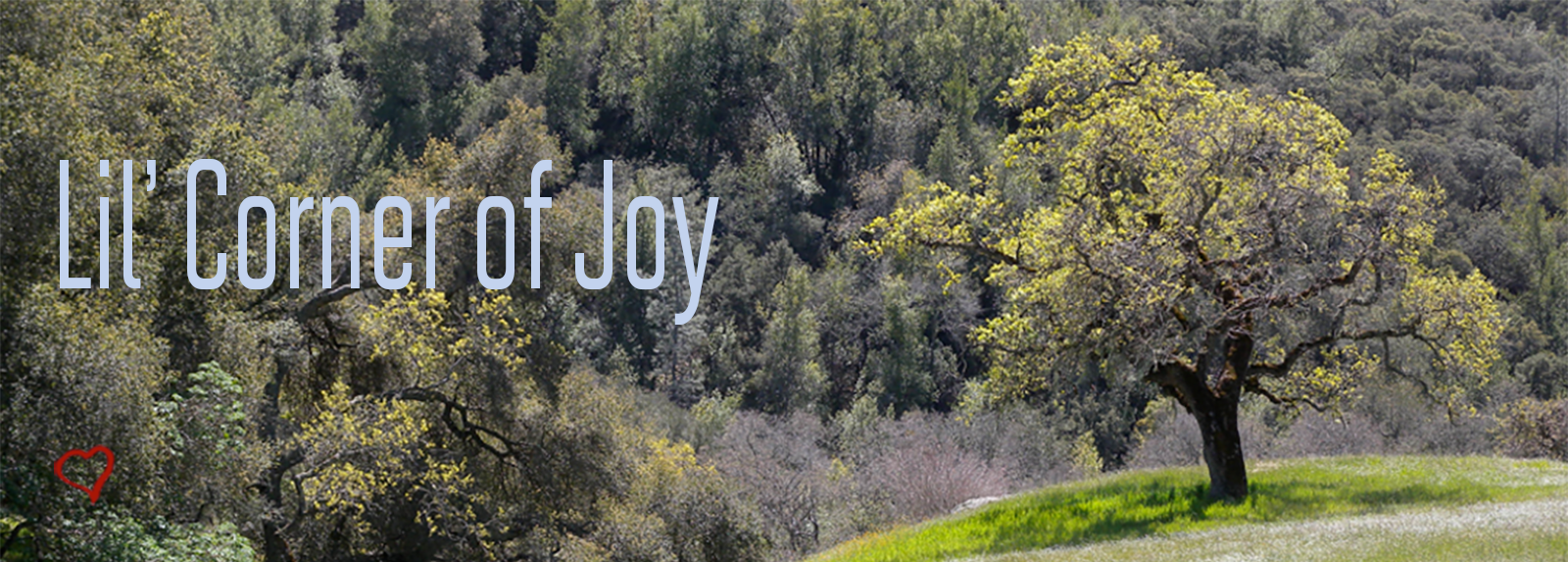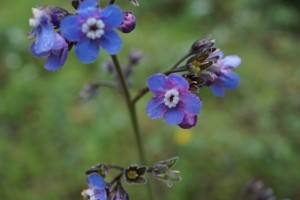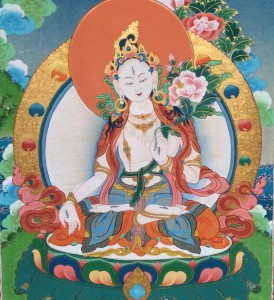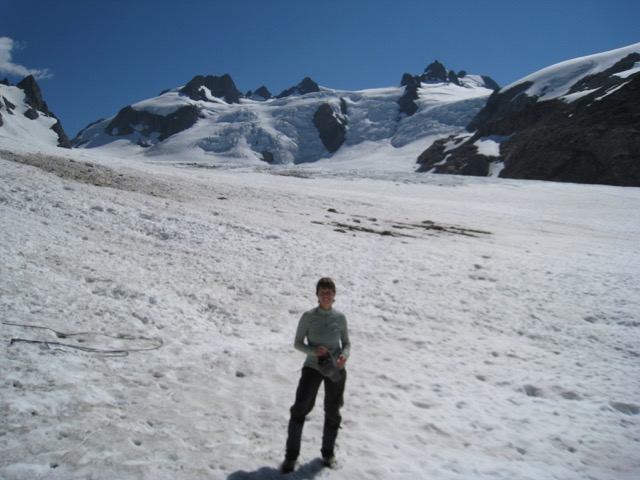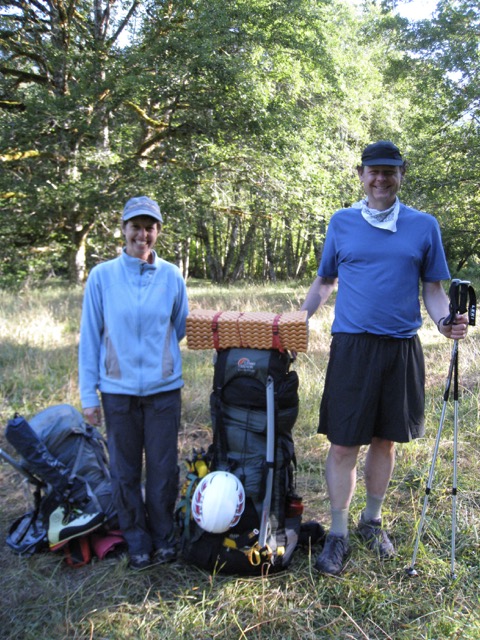Lesley, Bruce and I have fallen behind the rest of the pack. Chris, our teacher, strides behind us purposefully, spotting scope and tripod resting on his shoulder, herding us before him like a sheepdog guarding wayward sheep. Lesley peers into every crevasse looking for critters. I am frantically trying to draw a flower in my notebook while pretending to move forward. Bruce is also fascinated by the plants. We just need a little more time, but the rest of the group is already walking around the bend, and the pressure to move is greater than the wish to stay behind.
We’re hiking the Muddy Hollow Trail down to Limantour Spit, and it is gorgeous! Next to us, but mostly out of sight, is the creek. So many plants grow happily here with all the water. Hedge nettles bloom below overhanging willows and alder trees. Coffeeberry cradles red and black berries inside rounded green leaves, and a blackberry vine sprawls luxuriously nearby, its fruit having been already consumed, perhaps, by a passing deer. Ocean spray, past its bloom, still pours bouquets of dried flowers from every branch, and lilac hides its now forgotten flowers under a dark-green canopy of leaves. Birds are twittering from every direction, and the group stops to listen. Our guide, David, can tell the birds by their call as well as (so it seems to me at least) by their shadow. Tit wren, he says. Rough-wing swallows. Towhee. Gold finches. Song sparrow. Natalie, Chris and he set up scopes to allow everyone to take a close-up look at a great egret. A little bird darts by. A swallow, David says. I try to take note of some characteristic of the fast-moving bird so I’ll remember. Perhaps the shape of the wing? The fast flight? The V-split tail?
“When the group stops, this is your chance to get upfront,” Chris observes with some impatience as Lesley, Bruce and I find ourselves in the back of the pack again. He strides behind us in a way that makes it impossible to fall too far behind, bodily blocking the sandy trail. Lesley tells me in a soft tone that she would, if possible, do what he says, but she doesn’t want to push aside the other people. I agree with her, but I think that both of us don’t really want to be in the front. We want to be in the back: she to look for critters under the leaves and in the trees, and I to check out all the plants. I want to know all the plants’ names. I want to be able to recognize them by their leaves, stalks, general shape. I want to know what they are even when the flowers are gone.
We see Tule elk in the distance. Another egret, or perhaps the same one. A blue heron. We’re getting closer to the beach. The plants change, turning into a coastal community. Lower bushes and shrubs. Then, the dunes. Lesley and I eat lunch on the beach, staring into the bay. It is windy, and our food fills with sand. I can feel its grittiness against my teeth. Our geology instructor from the day before told us that Limantour Spit was a flowing river of sand, and I believe him. I can see the movement of it before my eyes. Seagulls watch our every bite. I remember another picnic on a beach, on Santa Cruz Island, being warned about the seagulls. “They will grab food from your mouth,” the kayaking guide had told us. “They will grab anything you drop or put on the table. The only thing they haven’t learned to do yet is unzip a cooler.” On Limantour Spit, we are not attacked by ravenous seagulls. We finish our food and rejoin the group, ready for a walk on the edge of Limantour Marsh.
Obedient, Lesley and I take the front, immediately behind David, turning after him onto a side trail leading closer to the marsh. Turns out European grass is not just invasive. It also cuts into unprotected legs like a knife. “Deal with it,” says David after he warns us against it. Lesley is looking for critters. I stare at little yellow flowers and wonder what their names are. We peer through the scopes at sand pipers flying in a cloud, spiraling an infinity near the marsh, their wings turning silvery as they dip in and out of the sun. We learn how to recognize pickleweed and eel grass, but my favorite is the tiny marsh lavender. I now notice it is everywhere, growing like a cute little tree out of the pickleweed-covered sand.
On the way back, Chris points out a rare plant: the Point Reyes rein orchid. It’s green and spiraling on a single stalk. I’m impressed. I would never have noticed it on my own, but now the other students recognize it in several spots along the walk. I find I am tired. All this walking and stopping in the sun had taken its toll. The names of plants swirl around my head, and I try not to remember any for fear of forgetting them all. When we arrive back at the Boathouse, I will transfer them to my journal and look them all up in my book.
In the parking lot, I push my way into the front seat of the van. The other David, our David who had been driving Lesley, Tanya and I in what he termed the Barf Car, had to go to the office, and there is no choice but to ride in the van with everyone else. I’m ashamed of pushing my way to the front, but there’s no choice. Sitting farther back a few days ago had ruined my entire afternoon with nausea and headache. I don’t want that to happen again. I stare forlornly out the front windshield, feeling like I’d done something wrong, forgetting all about the magical day in the wobbly, dizzying ride out of Limantour. Had it even happened — the walk, the plants and the birds, Chris herding us — or was it a dream? Perhaps, a dream. Or perhaps a week later, when I sit at my desk and write this blog, it is the opposite: the walk will be real, and the memory of the ride in the van all gone.
